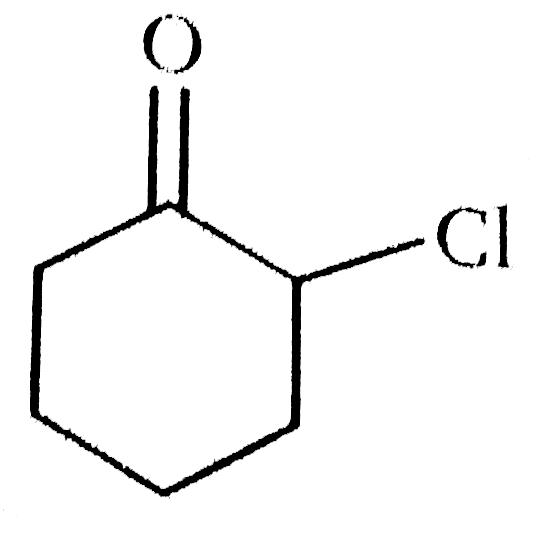Name the simplest ketone.
The simplest ketone is propanone and its structure is
Topper's Solved these Questions
- CARBON AND ITS COMPOUNDSBOOK - DINESH PUBLICATIONCHAPTER - CARBON AND ITS COMPOUNDSEXERCISE - Short Answer Questions
77 Videos
- CARBON AND ITS COMPOUNDSBOOK - DINESH PUBLICATIONCHAPTER - CARBON AND ITS COMPOUNDSEXERCISE - Long Answer Question
34 Videos
- CARBON AND ITS COMPOUNDSBOOK - DINESH PUBLICATIONCHAPTER - CARBON AND ITS COMPOUNDSEXERCISE - NCERT END EXERCISE
15 Videos
- ACIDS, BASES AND SALTS BOOK - DINESH PUBLICATIONCHAPTER - ACIDS, BASES AND SALTS EXERCISE - LAQs LONG ANSWER QUESTIONS
6 Videos
- CHEMICAL REACTIONS AND EQUATIONS BOOK - DINESH PUBLICATIONCHAPTER - CHEMICAL REACTIONS AND EQUATIONS EXERCISE - Multiple Choice Questions
18 Videos
Similar Questions
Knowledge Check
Di-tert-glycols rearrange in the presence of acid to give α-trtiary ketones. The trivial name of the simplest glycol of this type is pinacol, and this type of reaction therefore is named pinacol rearrangement (in this specific case, the reaction is called a pinacol-pinacolone rearrangement). The rearrangement involves 4 steps. one of the hydroxyl group is protonated in the first step. A molecule of water is eliminated in the second step and a tertiary carbocation is formed. the carbocation rearranges in the third step into a more stable carboxonium ion via a [1, 2] rearrangement. In the last step, the carboxonium ion is deprotonated and the product ketone is obtained.

What is R.D.S. of pinacol-pinacolone rearrangement ?AI stepBII stepCIII stepDIV stepDi-tert-glycols rearrange in the presence of acid to give α-trtiary ketones. The trivial name of the simplest glycol of this type is pinacol, and this type of reaction therefore is named pinacol rearrangement (in this specific case, the reaction is called a pinacol-pinacolone rearrangement). The rearrangement involves 4 steps. one of the hydroxyl group is protonated in the first step. A molecule of water is eliminated in the second step and a tertiary carbocation is formed. the carbocation rearranges in the third step into a more stable carboxonium ion via a [1, 2] rearrangement. In the last step, the carboxonium ion is deprotonated and the product ketone is obtained.


How many products obtained in above reaction ?A1B2C3D4Di-tert-glycols rearrange in the presence of acid to give α-trtiary ketones. The trivial name of the simplest glycol of this type is pinacol, and this type of reaction therefore is named pinacol rearrangement (in this specific case, the reaction is called a pinacol-pinacolone rearrangement). The rearrangement involves 4 steps. one of the hydroxyl group is protonated in the first step. A molecule of water is eliminated in the second step and a tertiary carbocation is formed. the carbocation rearranges in the third step into a more stable carboxonium ion via a [1, 2] rearrangement. In the last step, the carboxonium ion is deprotonated and the product ketone is obtained.


Product 'P' is :A B
B C
C D
D
Write the name and chemical formula of the simplest organic cid .
View SolutionGive it he common name and IUPAC name of the simplest aldehyde.
View SolutionDivide or write the simplest form
View SolutionGive the name and structural formula of the simplest amino acid.
View SolutionDi-tert-glycols rearrange in the presence of acid to give α-trtiary ketones. The trivial name of the simplest glycol of this type is pinacol, and this type of reaction therefore is named pinacol rearrangement (in this specific case, the reaction is called a pinacol-pinacolone rearrangement). The rearrangement involves 4 steps. one of the hydroxyl group is protonated in the first step. A molecule of water is eliminated in the second step and a tertiary carbocation is formed. the carbocation rearranges in the third step into a more stable carboxonium ion via a [1, 2] rearrangement. In the last step, the carboxonium ion is deprotonated and the product ketone is obtained.


Product (A) is :
View Solution
